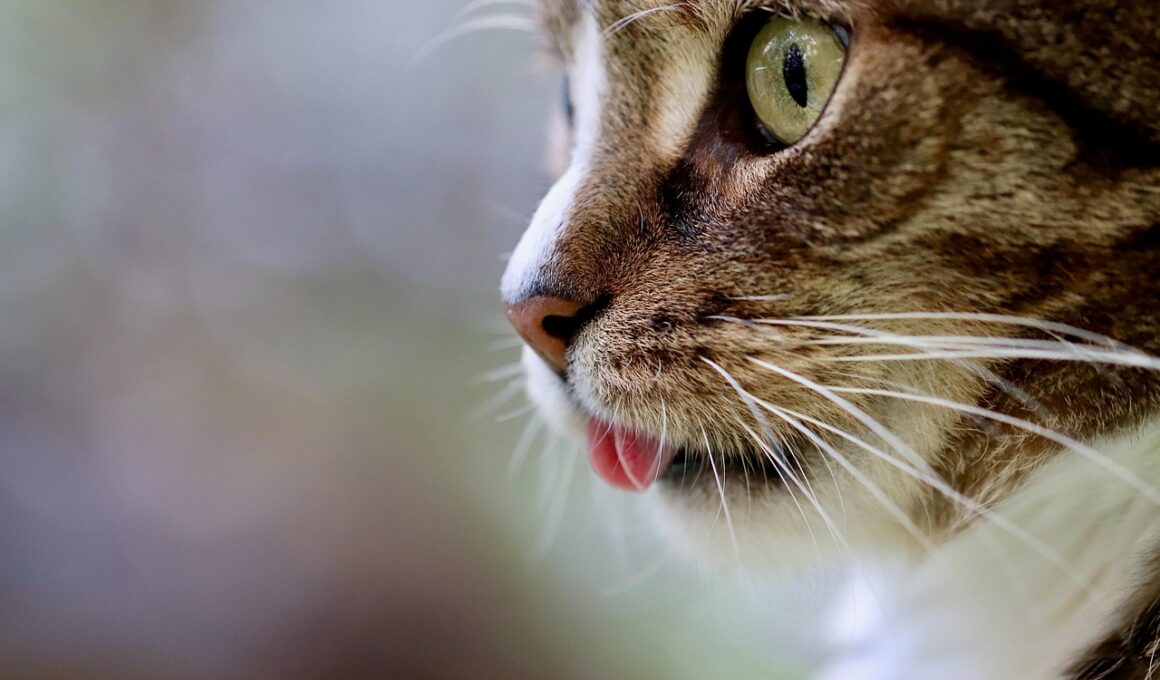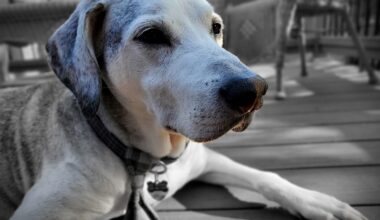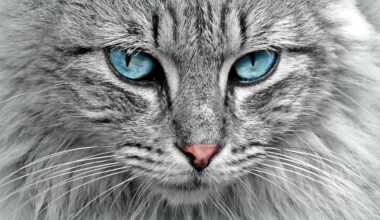The History and Evolution of Cat Racing Events
Cat racing events have a surprisingly rich history that dates back to ancient civilizations. Initially, these races were informal gatherings where enthusiasts showcased their agile and swift felines. Over time, cat racing evolved into a more organized community activity, gaining popularity amongst various cultures. Records suggest that the first documented cat racing events occurred in Egypt, where cats were revered for their hunting skills. Furthermore, as trade routes expanded, cat racing spread to Europe and beyond. In the 19th century, cat shows offered a platform for cats to compete in various categories, which paved the way for racing. These events focused on agility, speed, and overall health, emphasizing the importance of breeding. In these early competitions, specific breeds were favored for their unique skills. Enthusiasts began promoting purebreds, leading to the establishment of standards for cat breeds involved in racing. This evolution not only entertained individuals but also fostered a deeper appreciation for the feline species. Cat racing, now revered in different cultures, has captured the hearts of many, and it continues to generate excitement and joy.
In modern times, cat racing has undergone significant transformations, reflecting both cultural shifts and advancements in understanding feline behavior. Today, events are often held in controlled environments, promoting the safety and comfort of all participants involved. These competitions are now showcased in arenas, featuring additional facilities for both cats and their owners. The structure of events typically includes pre-registration, health checks, and time trials to ensure fairness among competitors. Furthermore, organizers prioritize the well-being of the cats, implementing safety measures to reduce the risk of injury. As a result, more cats have the chance to participate, leading to increased variety in breeds and personalities. With the advent of social media and online communities, the reach of cat racing has expanded exponentially. Enthusiasts can share their experiences and breed tips, driving interest in the sport. Moreover, cat racing clubs and associations have emerged, offering memberships, resources, and networking opportunities. As this evolution continues, many anticipate the sustainability and growth of cat racing, merging tradition and innovation to inspire newcomers and long-time fans alike.
Cat Breeds Involved in Racing Events
Distinct cat breeds have gained notoriety in racing events due to their physical abilities and temperament. Breeds like the Abyssinian, Bengal, and Siamese have emerged as favorites among competitors. These cats possess unique attributes that make them particularly suited for racing; for instance, the Abyssinian is known for its agility and intelligence, while the Bengal’s athleticism is impressive. Traditionally, these races focus on a combination of speed, reflexes, and the ability to navigate obstacles efficiently. Cattive events may also incorporate challenging courses that test each cat’s skills, encouraging owners to train and socialize their pets in preparation. Additionally, Siamese cats are often admired for their charming personalities, making them popular not only for their racing prowess but also for their appeal as companions. The variety of breeds competing further enriches the racing culture, promoting camaraderie among cat lovers. As the events continue to grow, more individuals are encouraged to discover unique feline breeds, expanding their knowledge of how diverse the cat world can be. Overall, the involvement of different breeds keeps each event fresh and exciting.
To enhance the entertainment factor in cat racing, organizers often streamline the event experience. This includes engaging commentary, lively music, and interactive activities for onlookers. Enthusiasts can join interactive voting platforms where they predict race outcomes or cheer for their favorite competitors in live broadcasts. These additional elements create an electrifying atmosphere during races, encouraging more spectators to attend. Additionally, many events focus on family-friendly activities to attract diverse audiences. Participants can enjoy petting zoos, food stands, and merchandise stalls showcasing cat-related products. Furthermore, the promotion of responsible pet ownership resonates throughout these races, with educational booths offering tips on training and caring for cats. As the sport becomes more inclusive, the chances of connecting with a broader audience increase. These events foster community bonds, enabling cat owners and enthusiasts to meet, share experiences, and create lasting friendships. This sense of connection enriches the sport, ensuring that even those without competitors still leave with memorable experiences that contribute to the overall growth of cat racing events.
The Role of Technology in Cat Racing
The era of technology has also significantly impacted cat racing, bringing innovation and efficiency to the process. Tracking systems and automated timing devices create accurate assessments of cat performance during competitions, ensuring that results are precise and transparent. Additionally, digital platforms allow participants to manage entries and monitor progress easily, adding convenience for cat owners and organizers alike. Video footage captured during the races can be used for coaching and improvement, helping competitors better understand their cats’ strengths and weaknesses. Notably, live streaming services enable audiences worldwide to follow their favorite races in real-time, creating a global fan base for the sport. This shift in the audience’s engagement methods opens doors for sponsorships and partnerships that help elevate cat racing events to new heights. Moreover, the integration of social media allows for instant communication and promotion, which fosters enthusiasm around upcoming events. As technology continues to evolve, numerous possibilities for innovative racing experiences will develop, encouraging the exploration and enjoyment of cat racing. Thus, the symbiosis of technology and tradition leads to continued growth in the sport.
Aside from pure racing events, many competitions now integrate special categories dedicated to unique skills and attributes of cats. Racing events have diversified, including sections for agility challenges, where cats navigate intricate obstacle courses. These additions create a more dynamic atmosphere, showcasing the versatility and intelligence of participating felines. Furthermore, competitions that feature tricks and stunts highlight the training capabilities of cats, challenging owners to engage in deeper interactions. Breeding practices continue to adapt based on these competitions, promoting characteristics that cater to racing and agility. Owners are encouraged to train their cats from a young age, forming strong bonds that enhance performance. In this way, racing events not only celebrate speed but also the relationship between cats and their guardians. This development fosters awareness around responsible pet ownership, leading to more informed decisions regarding fostering and adopting cats. Participants emerge not just as competitors but as ambassadors for balancing skill and care in feline companionship. Together, these events allow for a multifaceted appreciation of the feline world through education, enjoyment, and connection.
The Future of Cat Racing Events
The future of cat racing events seems promising, with increased interest leading to innovative approaches towards community involvement. As more people become aware of the joyful experience of cat racing, the number of events is expected to rise significantly. This expansion opens doors for new formats, accessibility, and inclusion in racing events. Furthermore, as infrastructures improve and new facilities arise, cat racing competitions will evolve, accommodating larger audiences and increasing participation. Community organizations and institutions may also take a greater role in supporting these events, establishing partnerships that promote education and advocacy in responsible cat ownership. Additionally, the expansion of diverse racing categories will likely emerge, offering various skill levels and presentations to cater to different interests. These changes ultimately signal progress in embracing the feline experience, advocating for volunteering and engagement. As participants share their passions and triumphs, they elevate the presence of feline sports. Overall, blending tradition and modern development paves the way for a vibrant future where cat racing continues to evolve while ensuring enjoyment for all involved.
Overall, the journey of cat racing events demonstrates the passion and dedication of those who participate and organize these competitions. As the sport continues to flourish, cat racing will evolve, showcasing the unique bonds between humans and felines. The historical significance and contemporary relevance of cat racing reflect society’s love for animals while promoting wellness and engagement. This enduring relationship fosters community spirit and shared experiences among participants, enthusiasts, and observers, ensuring cat racing remains a beloved pastime. As we look ahead, there’s little doubt that the allure of cat racing will persist, captivating future generations with its exciting developments and cherished traditions. This sport not only entertains but enriches lives, reminding us of the joy and fascination that cats bring to our existence. Many believe that as long as people embrace their connection with pets, cat racing events will thrive, offering joy, competition, and camaraderie. Future advancements will likely unveil new facets of the sport while retaining the excitement that has drawn people for centuries, keeping the legacy of cat racing alive. Through ups and downs, the future of cat racing events remains bright, promising endless possibilities.


